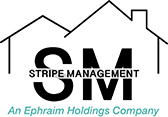Transitioning into homeownership within a Homeowners Association (HOA) setup requires an understanding of diverse components, with HOA documentation standing as arguably one of the most critical elements. This essential documentation, underpinned by statutory guidelines, provides the backbone for every HOA operation: from maintaining communal facilities to enforcing rules. As a tenant, acquainting yourself with this informational pool is paramount to your living experience within an HOA ecosystem. Ensuring these documents’ transparency is equally crucial, fostering trust and mutual understanding among community members. Hence, this read is dedicated to shading light on the extensive world of HOA documentation, highlighting its importance, how to access and interpret it, and strategies for optimizing its transparency.
Understanding HOA and its Documentation
Understanding Homeowner Associations
Homeowners Associations (HOAs) are established governing bodies that manage and oversee certain types of residential communities. These include condominiums, multi-family homes, and single-family home subdivisions. The primary focus of an HOA is to manage common areas, enforce rules, and facilitate the smooth running of the community. Owners in the community are automatically members of the HOA and are required to pay association fees and adhere to all rules established by the HOA. The HOA is usually organized and run by members elected from the neighborhood.
Importance of HOA Documentation
HOA documentation is crucial because it outlines the guidelines and regulations that govern the community. These documents provide detailed information on how the HOA operates, its rules and regulations, along with financial reports, board meeting minutes, and annual reports. Documents like the HOA’s Declaration of Covenants, Conditions, and Restrictions (CC&Rs), bylaws, and other legal documents are important as they contain information on the rights and responsibilities of the homeowners, rules for electing HOA board members, the scope of powers of the HOA board, among others. Documenting these crucial pieces of information helps to uphold the integrity of the HOA, remaining transparent and accountable to the members of the community.
The Role of Transparency in HOAs
Transparency in an HOA setting is paramount. It ensures all decisions and transactions are open to scrutiny, which fosters trust, prevents abuse of power, and promotes healthy communication between board members and homeowners. Transparency relates to how the HOA communicates with the homeowners about the association’s affairs, decisions made by the board, financial issues, and changes in regulations and rules. A transparent HOA also promotes compliance with the rules by the residents, as it helps them understand the purpose of the regulations.
Keeping HOA Documentation Transparent for Tenants
Keeping HOA documentation transparent for tenants involves making all HOA documents readily available to them. This includes annual budgets, financial statements, meeting minutes, and the association’s governing documents. Tenants should be able to access these documents easily—either through a shared online portal, at the HOA office, or by request.
When changes are made to rules or regulations, tenants must be informed immediately and provided with updated documents. Moreover, HOAs should actively inform and educate tenants about their rights and responsibilities, using these documents. If there are any disagreements or disputes, clear and documented procedures should be in place to address them.
The Advantages of Transparent HOA Documentation
Having transparency in HOA documentation can lead to a harmonious and respectful environment within the residential community. By ensuring tenants are fully informed and aware, they will better comprehend the reasons behind the association’s decisions, necessity of dues, initiatives taken in managing shared spaces, and any modifications to policies or regulations. This comprehensive understanding engenders a feeling of inclusion and stimulates active participation in preserving the community. As a result, the community prospers with engaged and well-informed tenants dedicated to upholding their shared interests and enhancing the worth of their properties.
Besides promoting amicable relationships among tenants, transparency also solidifies the HOA’s integrity. It nurtures responsibility among the HOA board members by minimizing any mismanagement or conflicts of interest, thereby safeguarding the welfare of the community.

The Importance of Transparency in HOA Documentation
The Consequential Role of Transparency in HOA Documentation
Transparency plays a pivotal role in building trust among the members of the Homeowners Association (HOA). For the relationship between the HOA board, property owners, and tenants to be positive and productive, clarity in terms of rules, procedures, and financial matters is crucial. By championing a transparent environment, the community functions more efficiently and cultivates a positive atmosphere.
Transparency Cultivates Trust
When the HOA documents are made easily available to tenants, they feel more involved in the community. With easy access to things like architectural guidelines, meeting minutes, financial reports, and bylaws, tenants gain a clear understanding of how the HOA operates and where their fees are going. This access to information dispels suspicions and reduces doubt regarding the HOA’s operations, thus breeding trust among the members. It also enables everyone to abide by the regulations, thereby ensuring the smooth running of the community.
Transparency Promotes Understanding and Cooperation
A transparent HOA is one that encourages active participation of the tenants in the community activities. HOA documents can serve as an excellent source of information for everyone to understand the vision, regulations and expenses, leading to more effective communication and cooperation among the members. Shared information can also spur engagement, encouraging tenants to voice their concerns and suggestions. This type of engagement leads to a more cohesive community spirit where every resident feels valued and heard.
Transparency Minimizes Disputes and Misunderstandings
When HOA documents are clearly defined, easily accessible and consistently updated, it minimizes the chances of disputes stemming from misunderstandings. If everyone has the same information about community rules and regulations, it mitigates the risks of non-compliance, frustrations, and conflicts among tenants. Detailed financial reports can also deter allegations of misappropriation or misuse of HOA funds, thereby reducing the tension that could arise from financial disputes.
Best Practices for Keeping HOA Documentation Transparent
For a fully transparent HOA, it’s essential to have an organized system to manage documents. These documents should be readily available to every member in a platform that is easily accessible. Regular updates on the HOA’s activities, decisions, and financial status should also be made available to all tenants. Additionally, offering explanations and solicit feedback on complex matters like financial reports or major decisions can further enhance HOA transparency.
Wrapping it up, fostering transparency in HOA documentation is not merely a practice to cultivate trust and collaboration; it also minimizes possible conflicts. Despite requiring a joint effort from the HOA board, landlords, and tenants, the payoff— a harmonious and thriving community— is unquestionably worth every effort.

Photo by brookecagle on Unsplash
Accessing and Understanding HOA Documents
Grasping HOA Documentation: A Must for Tenants
The Homeowners Association (HOA) documents serve as a guiding manual for the functioning and administration of an HOA. These documents provide a meticulous explanation of the rights and obligations of both HOA members and the board of directors. For tenants living in properties managed by HOA, getting a grasp on these documents is paramount, as they lay out the community’s rules and regulations.
Navigating Common HOA Documents
Typical HOA documents include the Covenants, Conditions, & Restrictions (CC&Rs), Bylaws, meeting minutes, and financial reports. The CC&Rs lay out the homeowner’s responsibilities to the HOA and vice versa. CC&Rs can cover anything from payment of HOA dues to aesthetic restrictions on home exteriors. Bylaws, on the other hand, govern how the HOA operates as a whole, including the election of board members and how meetings are conducted.
Meeting minutes provide a record of what was discussed and decided during HOA board meetings. Reading through these can offer valuable insight into the decision-making process at play within your community. Financial reports are equally important as they record the financial health of the HOA. These reports include information on revenue, expenses, and reserves, among other financial details.
Accessing HOA Documents
The first step to access any HOA document is knowing where to find them. Many HOA documents are readily available on your HOA website or can be requested from the HOA office. In some states, HOAs are legally required to share certain documents with tenants and homeowners upon request.
Interpreting and Decoding HOA Documents
Understanding HOA documents can be challenging due to their often-legal language. However, breaking down documents into sections and taking time to understand each piece can help. If the language is difficult to understand, you might consider seeking legal advice or requesting clarification from the HOA.
When HOA Documents Aren’t Clear or Accessible
If you encounter difficulties accessing or understanding HOA documents, there are several practical steps you should take. First, communicate with your HOA directly. Sometimes, a simple conversation can clarify any misunderstandings or miscommunications.
Second, if an HOA is failing to be transparent or withholding information, you should research your state laws. In many cases, laws on constitutional corporate operations obligate associations to make certain documents like financial statements or meeting minutes available to members. If the HOA is violating any of these laws, legal recourse might be your best option.
Finally, consider attending HOA meetings. This is an excellent opportunity to ask questions, express concerns, and gain a better understanding of the associations’ operations. Remember, as a tenant, you have the right to understand the rules and regulations you’re required to abide by.
A basic understanding of Homeowners Association (HOA) documentation transparency includes being aware of the different types of documents, figuring out where these documents are located, knowing how to decipher them, and, most importantly, understanding the right course of action when faced with documents that are difficult to interpret or obtain.

Improving HOA Document Transparency
Why Transparency Matters
Transparency in Homeowners Association (HOA) documentation is of utmost importance in creating an atmosphere of trust, justice, and community spirit among the homeowners. Ensuring that all HOA procedures are clear and transparent will lead to homeowners feeling more engaged and informed about their community, leading to a strengthened relationship among all involved parties. Adopting transparent practices can have a significant positive impact, as it helps in eliminating misunderstandings and doubts.
Implementing Open Meetings
One of the most effective methods of ensuring transparency in an HOA is by implementing open meetings. This means keeping the door open for every member to attend, participate, and contribute to discussion. Agendas, minutes, and other relevant meeting documents should be readily available for homeowners to review. This allows homeowners to stay informed about the HOA’s upcoming plans, ongoing projects, and financial decisions, reducing chances of miscommunication and misconceptions.
Accessible and Regular Communication
Another vital strategy to keep HOA documentation transparent is by maintaining regular and easily accessible communication with tenants. Adopting the use of various communication channels like email newsletters, community bulletin boards, dedicated websites, or social media encourages effective interaction and complete coverage. Offering various methods of communication can reach tenants on platforms they are already using and comfortable with, increasing the efficiency of the communication process.
Clear Document Formatting
Proper document formatting is another essential element of transparency in HOA documentation. Everything put on paper or displayed online should be easy to read, understand, and find. Avoid jargon and complex language, use bullet points and headings for ease of readability, and ensure all documents are organized and accessible. Clear, concise language reduces confusion and helps homeowners quickly locate the information they need.
Tenant Involvement in Decision-Making
Involving tenants in decision-making processes can significantly enhance the transparency of the HOA. Decisions that impact homeowners should not be made behind closed doors; it’s essential to allow homeowners to voice their thoughts or concerns. Thus, open voting on particular issues, inviting comments on new proposals, and enabling tenants to be part of certain committees or boards can make a huge difference in securing transparency and ensuring smoother HOA management.
Conducting Periodic Audit
Periodic audits are an excellent practice to maintain transparency in financial matters. Audits are conducted to ensure that the HOA’s financial statements provide a fair and accurate representation of the transactions they purport to represent. It thus brings confidence among the tenants about the appropriate use of the association’s money.
In conclusion, maintaining transparency in HOA documentation can be a challenging task, but adopting open meetings, frequent and accessible communication, clear document formatting, and robust tenant participation can significantly streamline the process and reinforce a sense of community and trust among the homeowners.

As we navigate the community-oriented living spaces in today’s world, the importance of understanding the backbone documentation that governs these spaces cannot be overstated. For HOA community members, this knowledge not only influences the quality of their living but it’s also the catalyst for a harmonious and collaborative neighborhood. How accessible and clear these HOA documents are, becomes as paramount as the documents themselves. By nurturing clear communication, open meetings, clear document formatting, and promoting tenant involvement in the decision-making process, a leap towards unmasking the typically intricate nature of HOA documentation can be achieved. Therefore, tenants, board members – and all other key stakeholders – must pull together to promote transparency, embracing a more inclusive, supportive, and thriving HOA community where everyone’s interests and comfort are entwined at heart.
